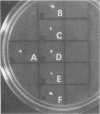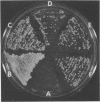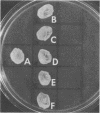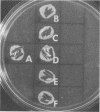Abstract
The finding that many psychrotrophic, gram-negative, nonmotile, oxidase-positive coccobacilli (achromobacters) are competent for genetic transformation made possible the development of a transformation assay that permits recognition of genetically related strains. It has been demonstrated that 109 independently isolated achromobacters are genetically related since deoxyribonucleic acid samples from all of these organisms were able to transform a single competent auxotrophic strain to prototrophy. Genetically interacting bacteria included strains that lacked one or more of the characteristics typical for most achromobacters. An oxidase-negative mutant of one of these strains reacted positively in the transformation assay, unlike other oxidase-negative bacteria. Achromobacters were derived from fish, poultry, irradiated foods, seawater, and other sources. One strain previously classified as Micrococcus cryophilus has been shown to be related to the achromobacters. Two achromobacters had an optimum growth temperature of 35°C and behaved as typical mesophiles. The moraxellae and Acinetobacter were shown to be unrelated to the achromobacters by using the transformation assay. The ready demonstration of genetic relatedness provides a new basis for taxonomic grouping of the psychrotrophic achromobacters.
Full text
PDF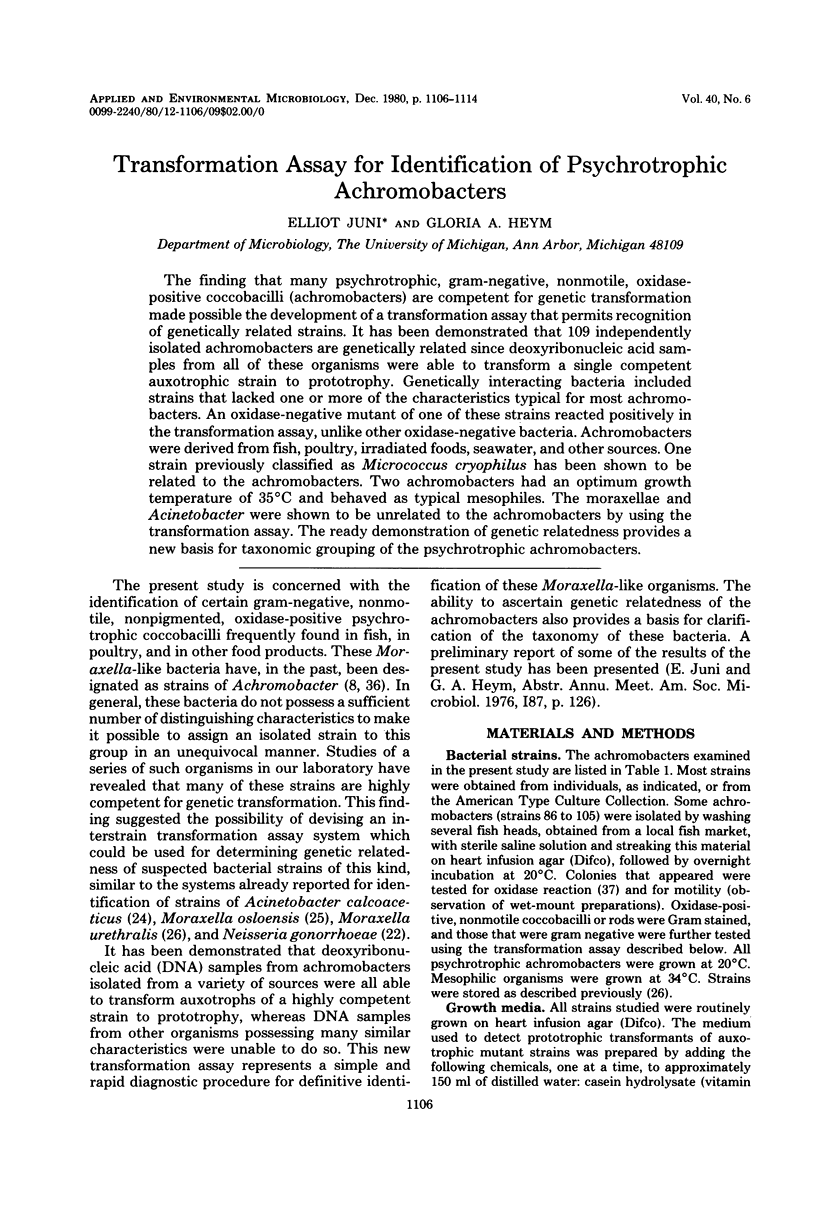
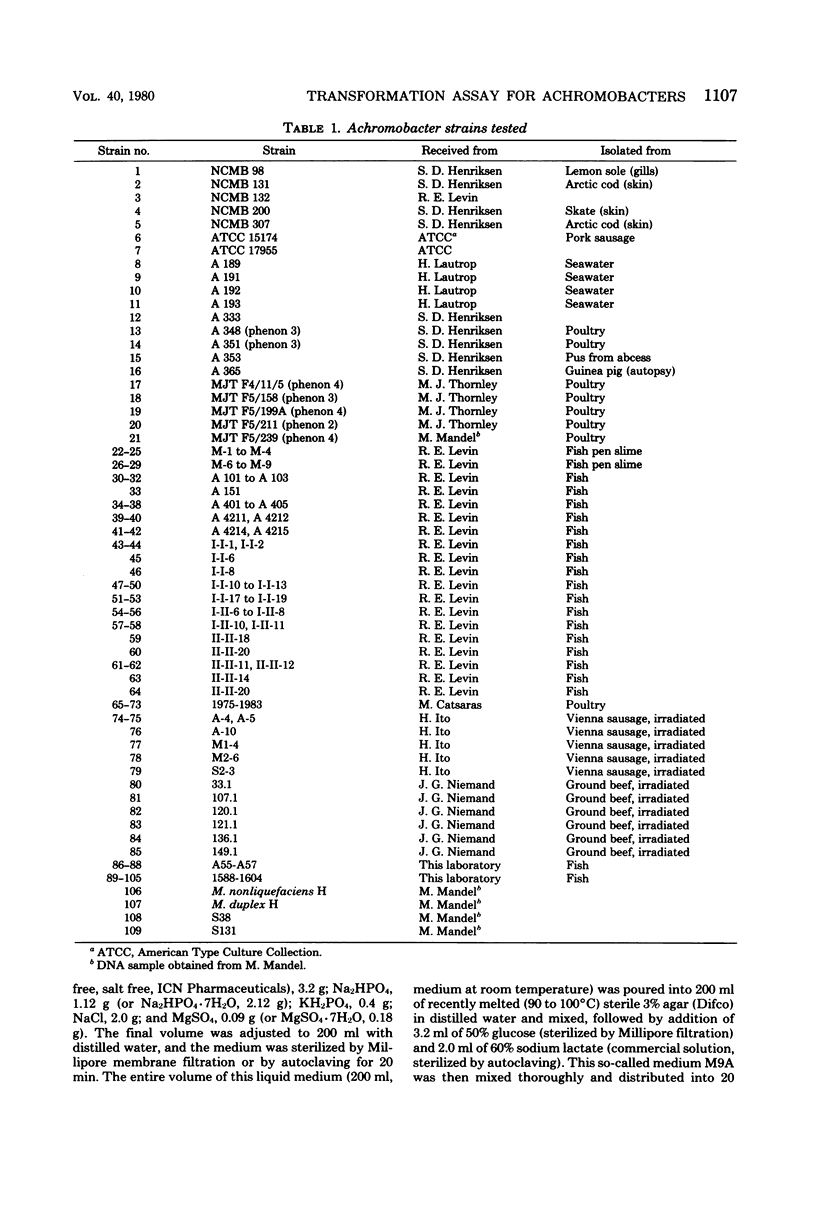
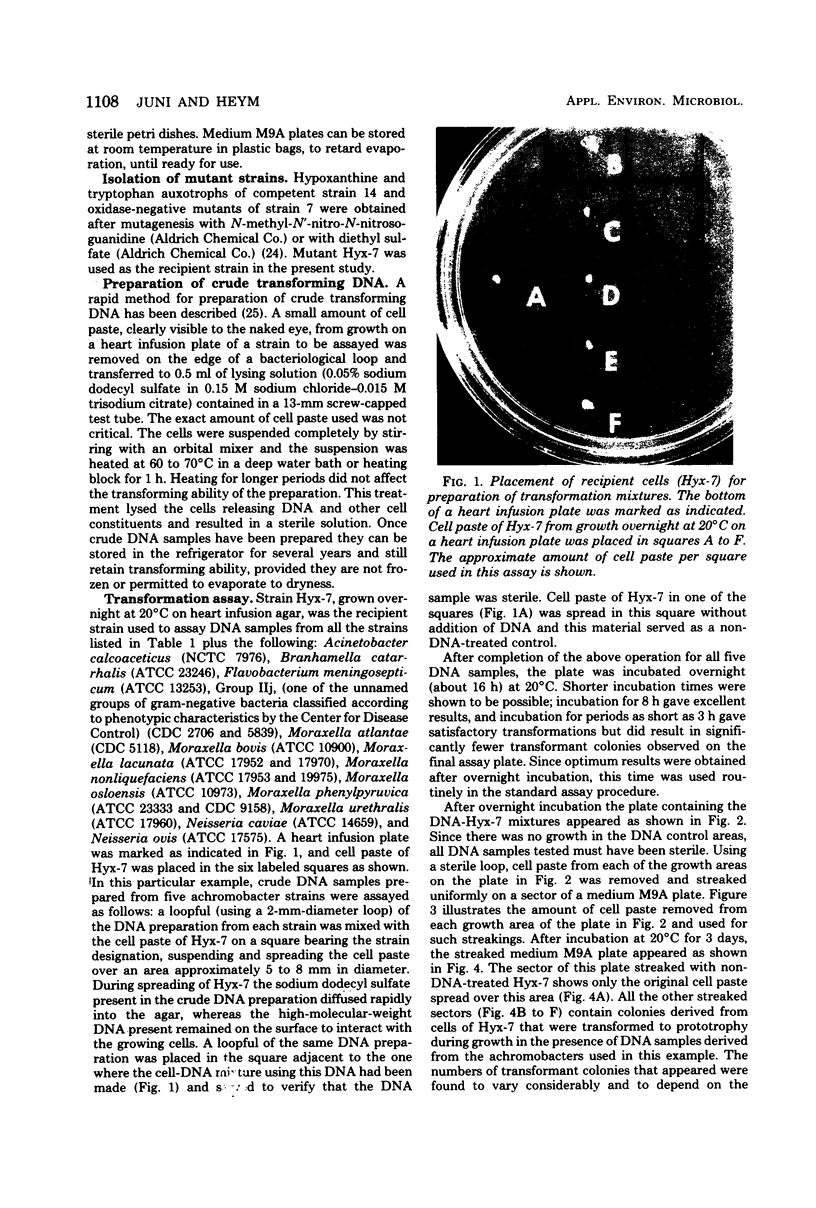
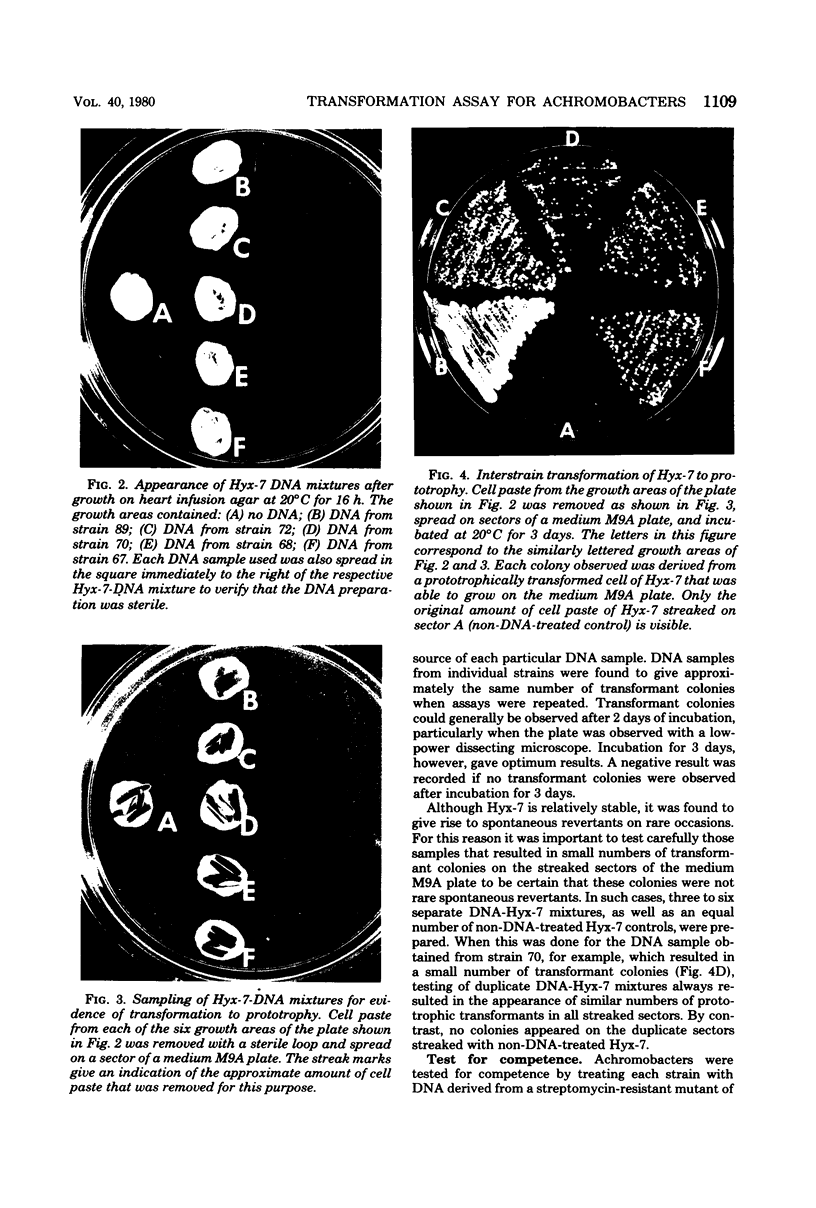
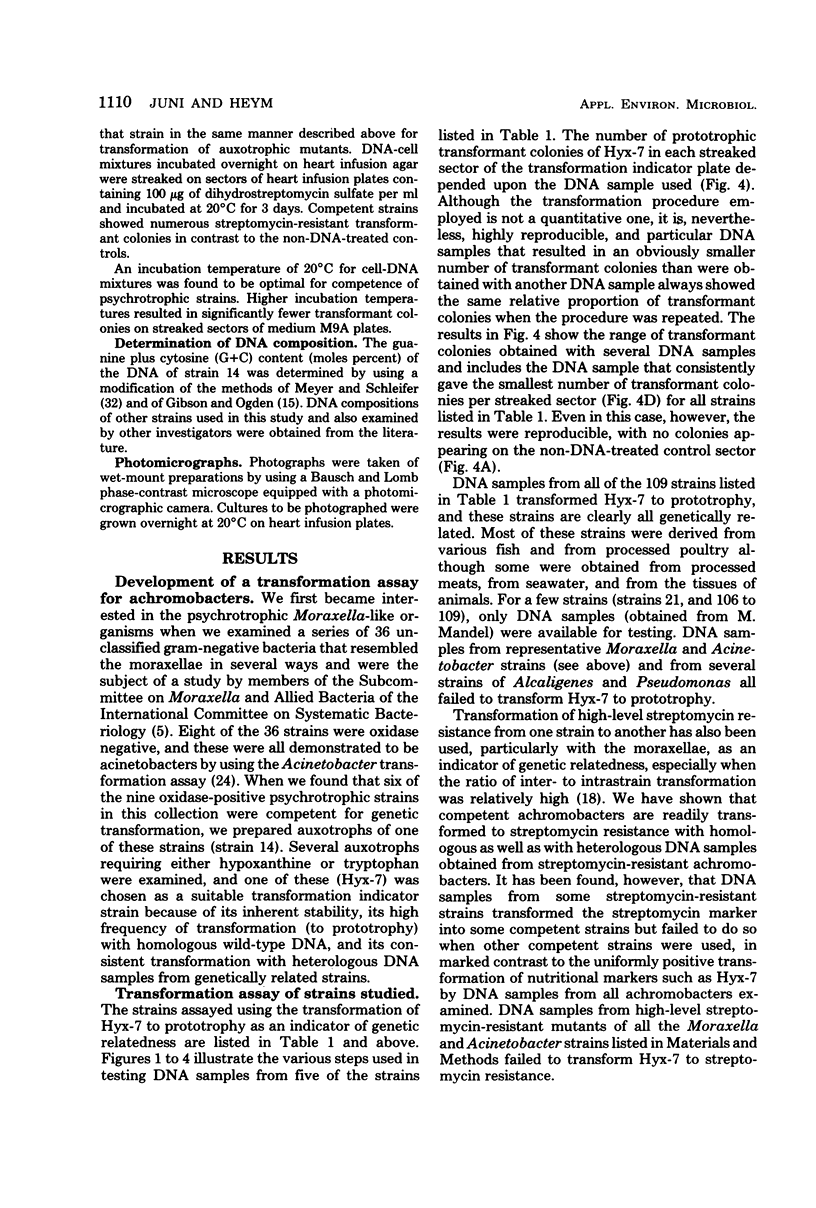
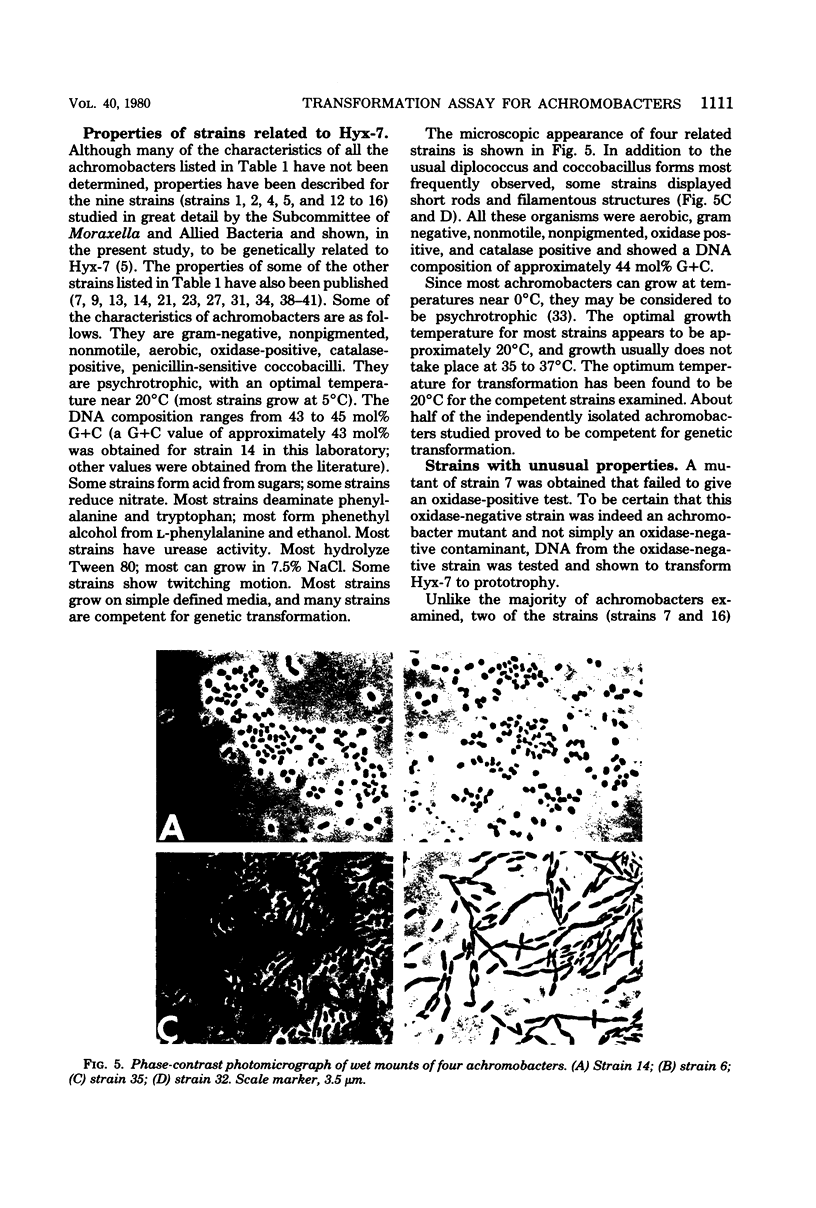
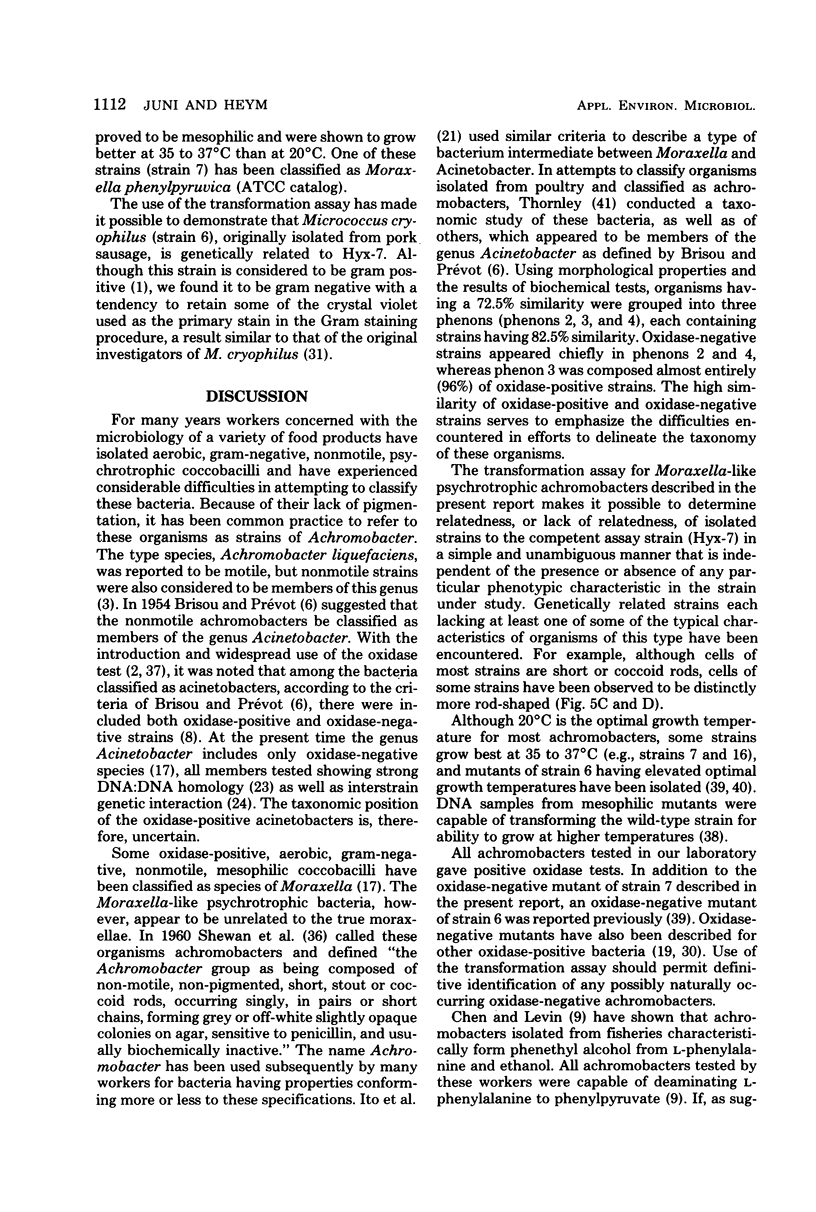
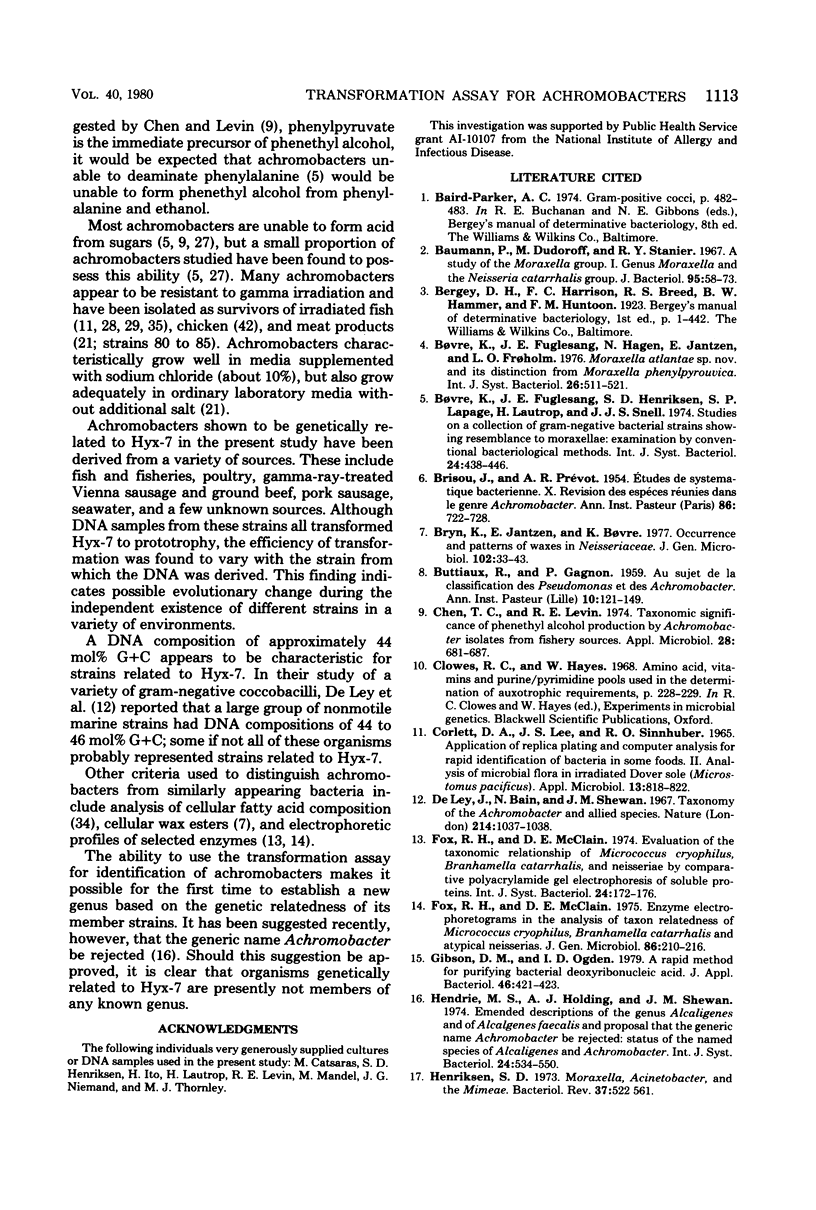
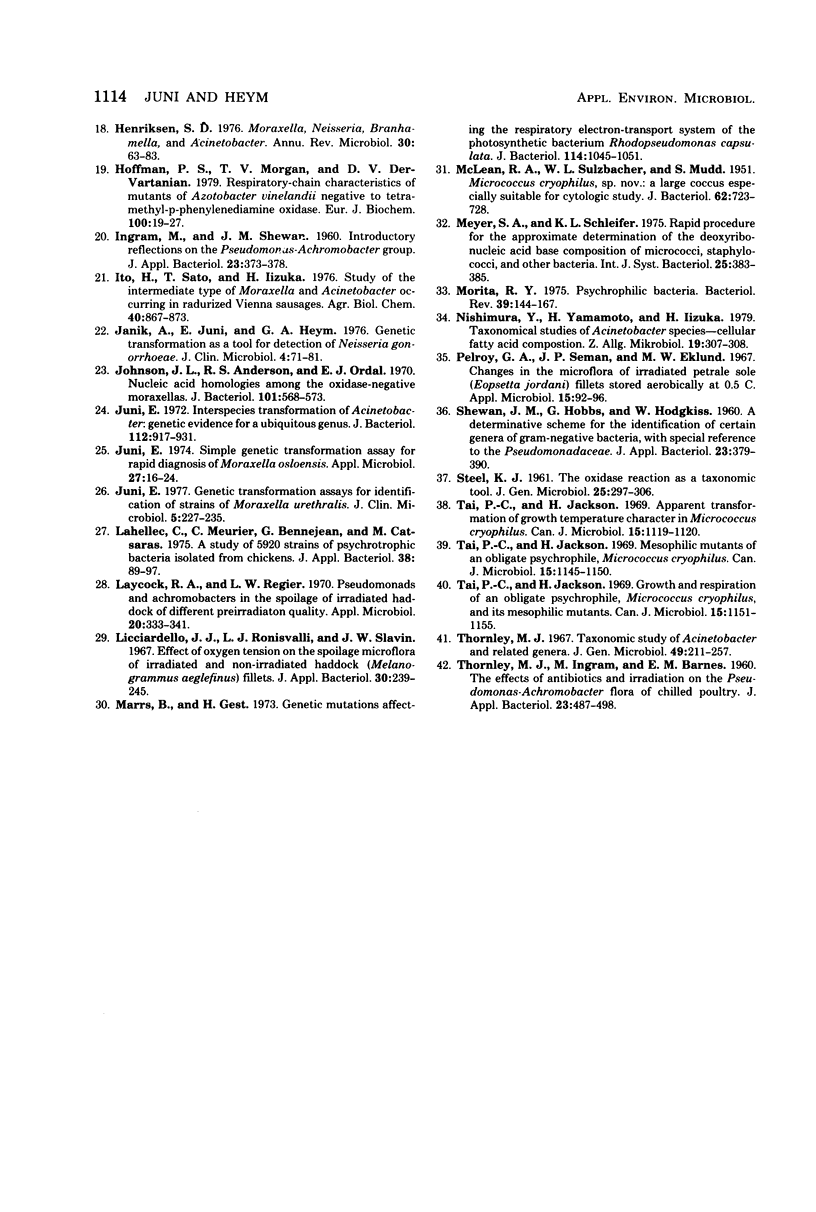
Images in this article
Selected References
These references are in PubMed. This may not be the complete list of references from this article.
- BRISOU J., PREVOT A. R. Etudes de systématique bactérienne. X. Révision des especes réunies dans le genre Achromobacter. Ann Inst Pasteur (Paris) 1954 Jun;86(6):722–728. [PubMed] [Google Scholar]
- BUTTIAUX R., GAGNON P. [On the subject of the classification of Pseudomonas and Achromobacter]. Ann Inst Pasteur Lille. 1958 1959;10:121–149. [PubMed] [Google Scholar]
- Baumann P., Doudoroff M., Stanier R. Y. Study of the Moraxella group. I. Genus Moraxella and the Neisseria catarrhalis group. J Bacteriol. 1968 Jan;95(1):58–73. doi: 10.1128/jb.95.1.58-73.1968. [DOI] [PMC free article] [PubMed] [Google Scholar]
- Bryn K., Jantzen E., Bovre K. Occurrence and patterns of waxes in Neisseriaceae. J Gen Microbiol. 1977 Sep;102(1):33–43. doi: 10.1099/00221287-102-1-33. [DOI] [PubMed] [Google Scholar]
- Chen T. C., Levin R. E. Taxonomic significance of phenethyl alcohol production by Achromobacter isolates from fishery sources. Appl Microbiol. 1974 Oct;28(4):681–687. doi: 10.1128/am.28.4.681-687.1974. [DOI] [PMC free article] [PubMed] [Google Scholar]
- Corlett D. A., Jr, Lee J. S., Sinnhuber R. O. Application of replica plating and computer analysis for rapid identification of bacteria in some foods. II. Analysis of microbial flora in irradiated Dover sole (Microstomus pacificus). Appl Microbiol. 1965 Sep;13(5):818–822. doi: 10.1128/am.13.5.818-822.1965. [DOI] [PMC free article] [PubMed] [Google Scholar]
- De Ley J., Bain N., Shewan J. M. Taxonomy of the Achromobacter and allied species. Nature. 1967 Jun 3;214(5092):1037–1038. doi: 10.1038/2141037a0. [DOI] [PubMed] [Google Scholar]
- Fox R. H., McClain D. E. Enzyme electrophoretograms in the analysis of taxon relatedness of Micrococcus cryophilus, Branhamella catarrhalis and atypical Neisserias. J Gen Microbiol. 1975 Feb;86(2):210–216. doi: 10.1099/00221287-86-2-210. [DOI] [PubMed] [Google Scholar]
- Gibson D. M., Ogden I. D. A rapid method for purifying bacterial deoxyribonucleic acid. J Appl Bacteriol. 1979 Jun;46(3):421–423. doi: 10.1111/j.1365-2672.1979.tb00839.x. [DOI] [PubMed] [Google Scholar]
- Henriksen S. D. Moraxella, Acinetobacter, and the Mimeae. Bacteriol Rev. 1973 Dec;37(4):522–561. doi: 10.1128/br.37.4.522-561.1973. [DOI] [PMC free article] [PubMed] [Google Scholar]
- Henriksen S. D. Moraxella, neisseria, branhamella, and acinetobacter. Annu Rev Microbiol. 1976;30:63–83. doi: 10.1146/annurev.mi.30.100176.000431. [DOI] [PubMed] [Google Scholar]
- Hoffman P. S., Morgan T. V., DerVartanian D. V. Respiratory-chain characteristics of mutants of Azotobacter vinelandii negative to tetramethyl-p-phenylenediamine oxidase. Eur J Biochem. 1979 Oct;100(1):19–27. doi: 10.1111/j.1432-1033.1979.tb02029.x. [DOI] [PubMed] [Google Scholar]
- Janik A., Juni E., Heym G. A. Genetic Transformation as a tool for detection of Neisseria gonorrhoeae. J Clin Microbiol. 1976 Jul;4(1):71–81. doi: 10.1128/jcm.4.1.71-81.1976. [DOI] [PMC free article] [PubMed] [Google Scholar]
- Johnson J. L., Anderson R. S., Ordal E. J. Nucleic acid homologies among oxidase-negative Moraxella species. J Bacteriol. 1970 Feb;101(2):568–573. doi: 10.1128/jb.101.2.568-573.1970. [DOI] [PMC free article] [PubMed] [Google Scholar]
- Juni E. Genetic transformation assays for identification of strains of Moraxella urethralis. J Clin Microbiol. 1977 Feb;5(2):227–235. doi: 10.1128/jcm.5.2.227-235.1977. [DOI] [PMC free article] [PubMed] [Google Scholar]
- Juni E. Interspecies transformation of Acinetobacter: genetic evidence for a ubiquitous genus. J Bacteriol. 1972 Nov;112(2):917–931. doi: 10.1128/jb.112.2.917-931.1972. [DOI] [PMC free article] [PubMed] [Google Scholar]
- Juni E. Simple genetic transformation assay for rapid diagnosis of Moraxella osloensis. Appl Microbiol. 1974 Jan;27(1):16–24. doi: 10.1128/am.27.1.16-24.1974. [DOI] [PMC free article] [PubMed] [Google Scholar]
- Lahellec C., Meurier C., Bennejean G., Catsaras M. A study of 5920 strains of psychotrophic bacteria isolated from chickens. J Appl Bacteriol. 1975 Apr;38(2):89–97. doi: 10.1111/j.1365-2672.1975.tb00508.x. [DOI] [PubMed] [Google Scholar]
- Laycock R. A., Regier L. W. Pseudomonads and achromobacters in the spoilage of irradiated haddock of different preirradiation quality. Appl Microbiol. 1970 Sep;20(3):333–341. doi: 10.1128/am.20.3.333-341.1970. [DOI] [PMC free article] [PubMed] [Google Scholar]
- Marrs B., Gest H. Genetic mutations affecting the respiratory electron-transport system of the photosynthetic bacterium Rhodopseudomonas capsulata. J Bacteriol. 1973 Jun;114(3):1045–1051. doi: 10.1128/jb.114.3.1045-1051.1973. [DOI] [PMC free article] [PubMed] [Google Scholar]
- McLEAN R. A., SULZBACHER W. L., MUDD S. Micrococcus cryophilus, spec. nov.; a large coccus especially suitable for cytologic study. J Bacteriol. 1951 Dec;62(6):723–728. doi: 10.1128/jb.62.6.723-728.1951. [DOI] [PMC free article] [PubMed] [Google Scholar]
- Morita R. Y. Psychrophilic bacteria. Bacteriol Rev. 1975 Jun;39(2):144–167. doi: 10.1128/br.39.2.144-167.1975. [DOI] [PMC free article] [PubMed] [Google Scholar]
- Nishimura Y., Yamamoto H., Iizuka H. Taxonomical studies of Acinetobacter species--cellular fatty acid composition. Z Allg Mikrobiol. 1979;19(4):307–308. doi: 10.1002/jobm.3630190411. [DOI] [PubMed] [Google Scholar]
- Pelroy G. A., Seman J. P., Jr, Eklund M. W. Changes in the microflora of irradiated petrale sole (Eopsetta jordani) fillets stored aerobically at 0.5 C. Appl Microbiol. 1967 Jan;15(1):92–96. doi: 10.1128/am.15.1.92-96.1967. [DOI] [PMC free article] [PubMed] [Google Scholar]
- Tai P. C., Jackson H. Apparent transformation of growth-temperature character in Micrococcus cryophilus. Can J Microbiol. 1969 Sep;15(9):1119–1120. doi: 10.1139/m69-202. [DOI] [PubMed] [Google Scholar]
- Tai P. C., Jackson H. Growth and respiration of an obligate psychrophile, Micrococcus cryophilus, and its mesophilic mutants. Can J Microbiol. 1969 Oct;15(10):1151–1155. doi: 10.1139/m69-210. [DOI] [PubMed] [Google Scholar]
- Tai P. C., Jackson H. Mesophilic mutants of an obligate psychrophile, micrococcus cryophilus. Can J Microbiol. 1969 Oct;15(10):1145–1150. doi: 10.1139/m69-209. [DOI] [PubMed] [Google Scholar]
- Thornley M. J. A taxonomic study of Acinetobacter and related genera. J Gen Microbiol. 1967 Nov;49(2):211–257. doi: 10.1099/00221287-49-2-211. [DOI] [PubMed] [Google Scholar]



